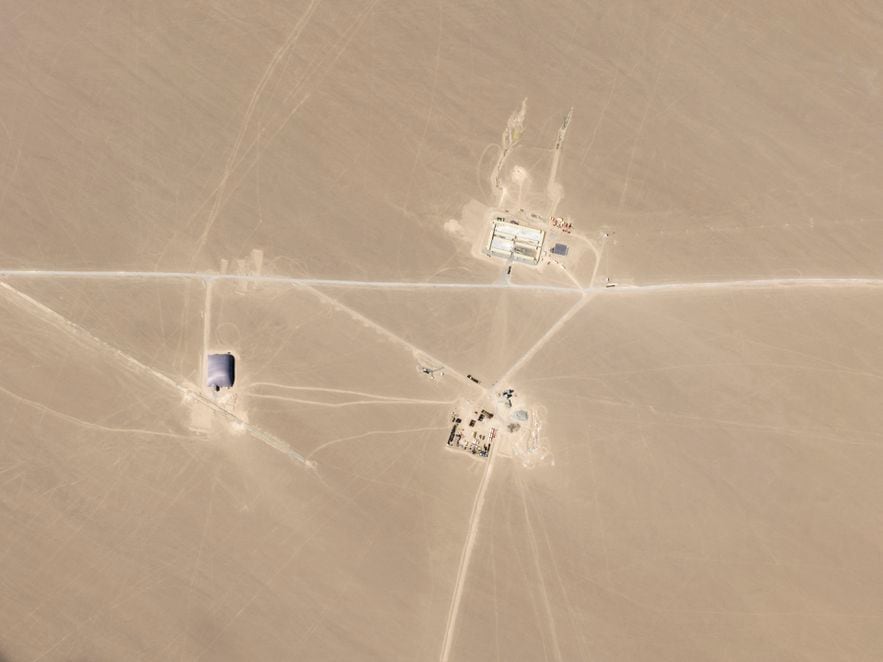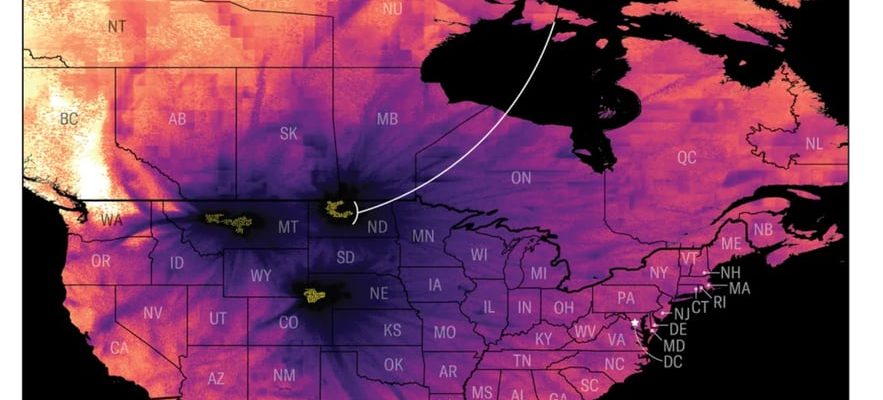The Americans call this “the great sponge”. 400 nuclear silos remain in the United States, out of the 1,000 dug during the Cold War. What would happen if these underground launchers were bombed, condition sine qua non to any major offensive against Uncle Sam ? On the board, behind Sébastien Philippe, a few equations still linger: the Frenchman, ex-engineer at Defense and physicist at Princeton University, has just published his estimates in the specialized magazine ScientificAmerican. A numerical overview of the apocalypse.
L’Express: Less interesting than submarines, because they are fixed, easy to target, and aging, silos would still provide a diversion in the event of an attack, according to American strategists. They will thus be renovated. Enough to protect civilians, according to the authorities. Really ?
Sébastien Philippe: Until now, we did not have a sufficiently precise point of comparison to say whether such a screen would save lives in the event of an attack, as is regularly asserted by the government and the Defense lobby. By taking into account the location of the silos still armed – most have been identified in Colorado, Wyoming, Nebraska, Montana and North Dakota – and the nuclear power necessary to explode the basements, it is possible to reconstruct as closely as possible the trajectory and importance of the radioactive clouds. We can then identify different scenarios, depending on the winds, based on weather data for the year 2021. This is what we did.
Radioactive exposure rate based on the worst weather conditions of 2021, in grays. From light yellow, corresponding to the limit level authorized per year in the USA, to dark purple, equal to certain death within a few hours.
© / Sébastien Philippe, Svitlana Lavrenchuk and Ivan Stepanov
According to this new theoretical model, which would not have been obtained if American meteorologists had not improved their measurements which are now very detailed and complete over the entire territory, approximately one to two million people would die in the immediately, following acute irradiation. Depending on the winds on the day of the attack, the entire United States and a large part of Mexico and Canada would be exposed to deadly fallout. Even Europe would be affected. Thus, these results, which for the moment have not been published in a scientific journal, show that silos do not protect Americans. Sometimes built a few meters from homes, on the contrary, they pose very significant risks in the event of an attack. Risks much higher than the hoped-for military gains.
These estimates clarify other more summary models dating from the 1980s. They are part of a file from Une de ScientificAmerican, devoted to the “new nuclear age” and the risks for humanity. Why establish these kinds of disaster scenarios?
Even if in 2023, the number and location of silos are generally known to Americans, after the government made public some of the information concerning them and through questions from local residents and associations, the general public has not aware of the risks it faces because of military nuclear infrastructures. Few people know if they live in the irradiation zone directly linked to the explosion of a site, or which would be in the path of the cloud. These are not issues debated in the United States. Nor in France for that matter.
However, the nuclear threat and the arms race are regaining ground, due to the decisions of leaders elected by these same populations. It is important to be informed on these issues, to understand the subject. In the United States, the Air Force published an assessment last March of the environmental impact of the renovation of silos. However, nothing is said about the possible consequences for the populations. We must rationalize nuclear military decisions, which are often subject to numerous economic, political, bureaucratic and budgetary biases. If the United States has kept its silos, it is also and above all to promote them and avoid giving the impression of wasting…
We are getting closer to a nuclear winter again…
Yes. The renovation of American silos is part of a huge project to renew the nuclear arsenal, estimated at more than trillion dollars. This is part of a global trend of unraveling the non-proliferation treaties signed since the Cold War, which made it possible to roll back atomic armament. Russia has increased its arsenal, paused New Start, the last bilateral non-proliferation agreement with the United States, and broken its promise not to carry out any more tests. China is also building new silos, not far from the cities of Yumen, Hami and Ordos. According to our theoretical model, again, tens of millions of people could die in the event of a strategic nuclear strike on these infrastructures. According to our study, half of Beijing could perish depending on the weather, because the city is relatively close to these sites.

According to the Federation of American Scientists (FAS), a collective of American researchers, these images taken in the fields of Xinjiang in 2021 show nuclear silos under construction.
© / AFP PHOTO /PLANET LABS, INC.
France has also chosen to renovate its missiles. The country will invest around 54 billion euros in deterrence over the period from 2024 to 2030, or 13% of the military budget. In 2023, the nine official nuclear powers held around 10,000 nuclear warheads, or 135,000 times Hiroshima, according to estimates – all this information is never fully public, for strategic reasons. The world is at a crossroads. Either we continue in this new nuclear arms race and in this acceleration that began since the start of the war in Ukraine, or we return to the fundamentals: control, rationalization, limitation.
Could such a dark scenario happen to France?
In France, we had silos positioned on the Albion plateau. But they have not been armed since the 1990s. French nuclear weapons are deployed on launcher submarines. One of them is in Brittany at L’île longue, the others crisscross the sea. In the event of an attack, if the enemy wants to avoid a response, all identified nuclear bases, as well as qualified air bases would be probably hit. Enough to cause considerable fallout. In this case, as in the American case, nuclear sponges do not exist.
.
